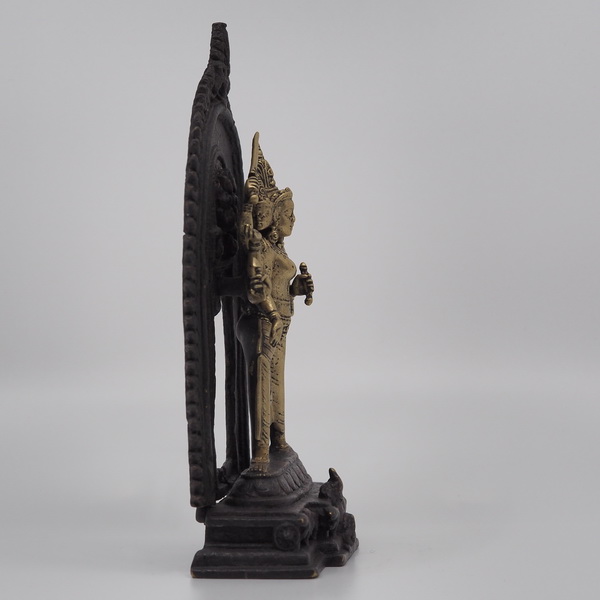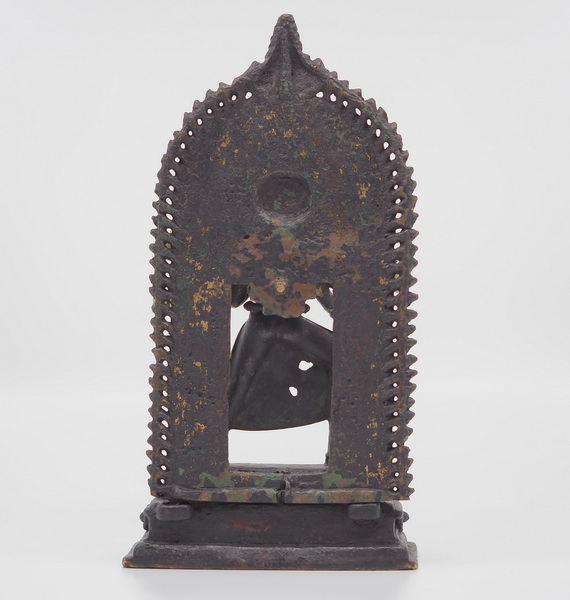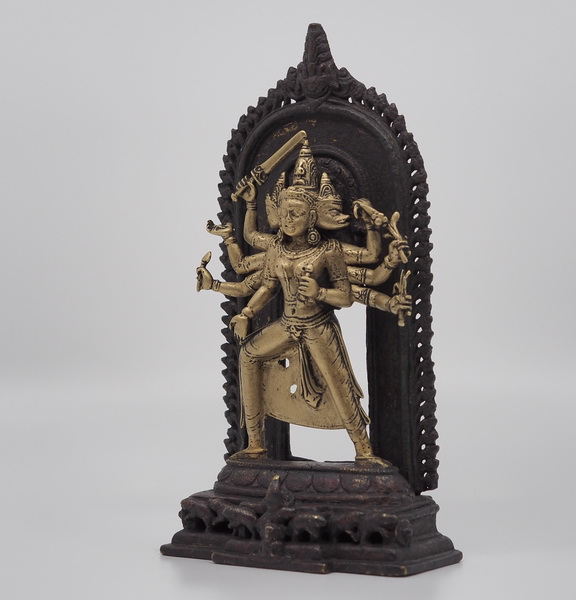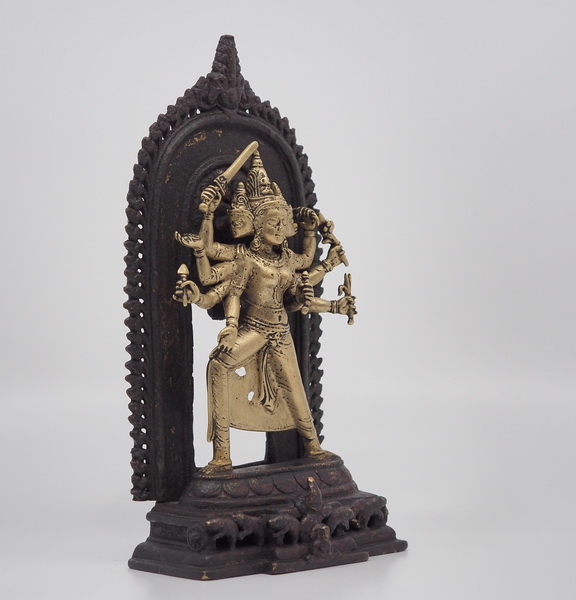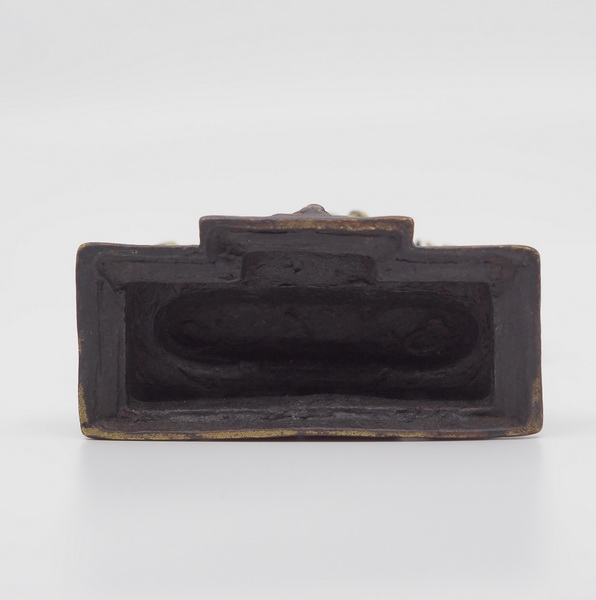ABS 308
Code: ABS 308
Country: India (north-east)
Style: Late Pala Style
Date: 1000 - 1100
Dimensions in cm WxHxD: 11 x 20
Materials: Brass
Of the few Pala bronzes of Marici known this appears to be perhaps the finest.
(Formerly von Schroeder Collection 2014-12)
(From Wikipedia, the free encyclopedia)
Marici (lit. "Ray of Light"), is a deva, as well as a bodhisattva associated with light and the sun. She is among the lists one of the guardian devas, specifically the Sixteen Devas, the Twenty Devas and the Twenty-Four Devas. In Taoism and Chinese folk religion, Doumu (Chinese: pinyin: Dǒumǔ Yuánjūn) is considered to be synonymous with Mārīcī within Chinese Esoteric Buddhism.
Marici is depicted in several ways. Some examples included:
*As a man or woman on an open lotus, the lotus itself sometimes perched on the back of seven sows.
*As a male deity riding a boar, often having two or six arms.
*Riding a fiery chariot pulled by seven savage boars or sows.
*As a multi-armed woman with a different weapon in each hand standing or sitting on the back of a boar.
*As having three faces and six or eight arms.
In Tibetan literature, the Bari Gyatsa contains five different descriptions of Marici:
*Oḍḍiyāna Mārīcī
*Kalpa Ukta Mārīcī
*Kalpa Ukta Vidhinā Sita Mārīcī
*Aśokakāntā Mārīcī
*Oḍḍiyāna Krama Mārīcī
The Drub Tab Gyatso has six descriptions:
*White with five faces and ten hands
*Yellow with three faces and eight hands
*Yellow with three faces and eight hands
*Dharmadhātu Īsvarī, red with six faces and twelve hands
*Picumī, yellow with three faces and eight hands
*Red with three faces and twelve hands
The Nartang Gyatsa and Rinjung of Taranata describe one form.
Both the Vajravali and Mitra Gyatsa describe a mandala of Mārīcī that includes twenty-five surrounding figures.
This is not an exhaustive list, and many more depictions of Mārīcī exist throughout the Buddhist world.
Origins
The origins of Mārīcī are obscure; however, she appears to be an amalgamation of Indic, Iranian and non-Indo-Iranian antecedents spanning 1500 years.
She is also thought to have originated from the Vedic goddess of dawn Usas.
Bautze-Picron, Claudine, 2001. “Between Sakyamuni and Vairocana: Marici, Goddess of Light and Victory”, Silk Road Art and Archaeology, No. 7, (2001). Silk Road Art and Archaeology.
Bock, Etienne; Falcombello, Jean-Marc; Jenny Magali, 2022. Trésors du Tibet. Sur les pas de Milarépa.. Paris: Flammarion. p. 88
de Mallmann, Marie-Thérèse, 1975. Introduction à l'iconographie du tântrisme bouddhique. Paris: Adrien Mainsonneuve (Jean Maisonneuve successeur (1970). Pp. 55—56, 259-65
Donaldson, Thomas E., 1995. “Orissan Images of Varahi, Oddiyana Marici, and Related Sow-Faced Goddesses”, Artibus Asiae, Vol. LV, Nos. 1/2. Artibus Asiae. Pp. 155—82, 20 figs
Mitra, Mallar, 1991. “Images of Marichi found in the Museums of Calcutta”, Studies in Archaeology. Studies in Archaeology. Pp. 343-54, pls. 43-50


